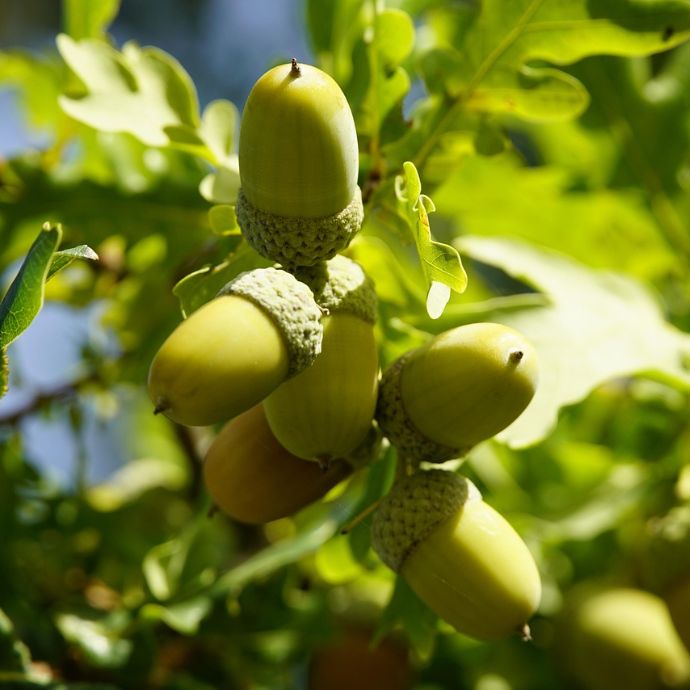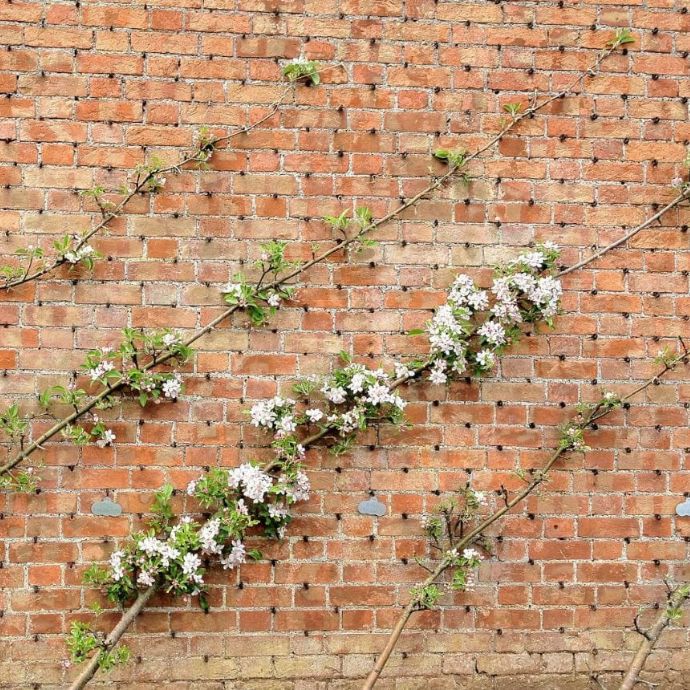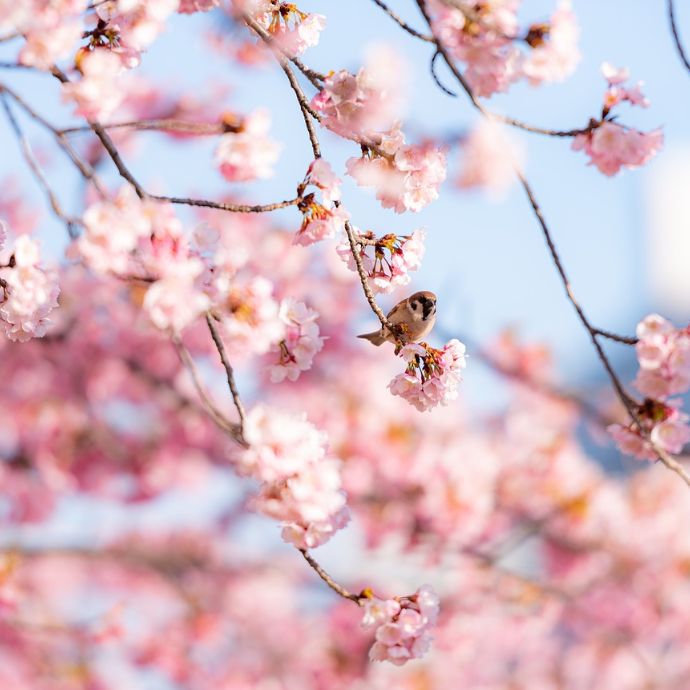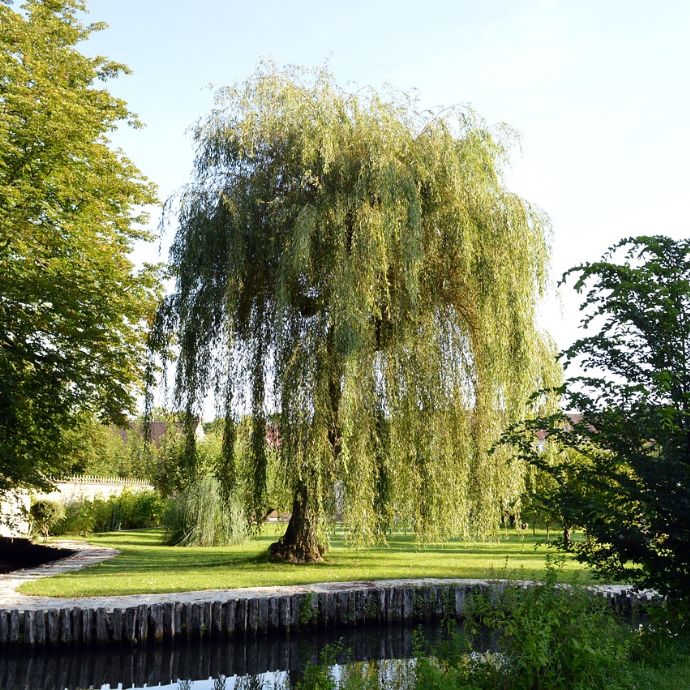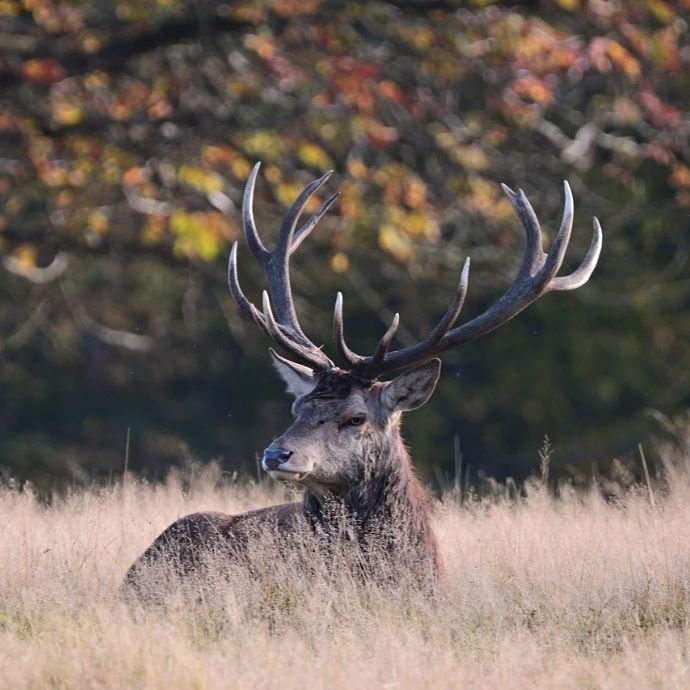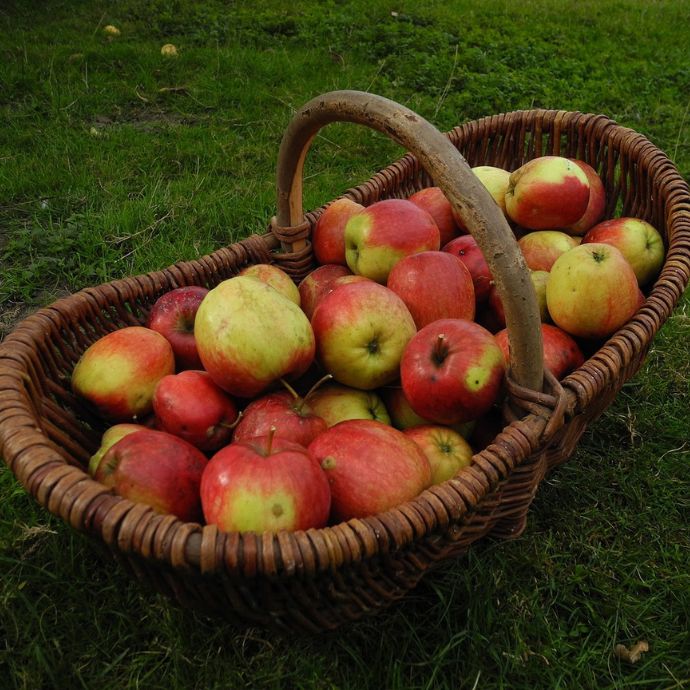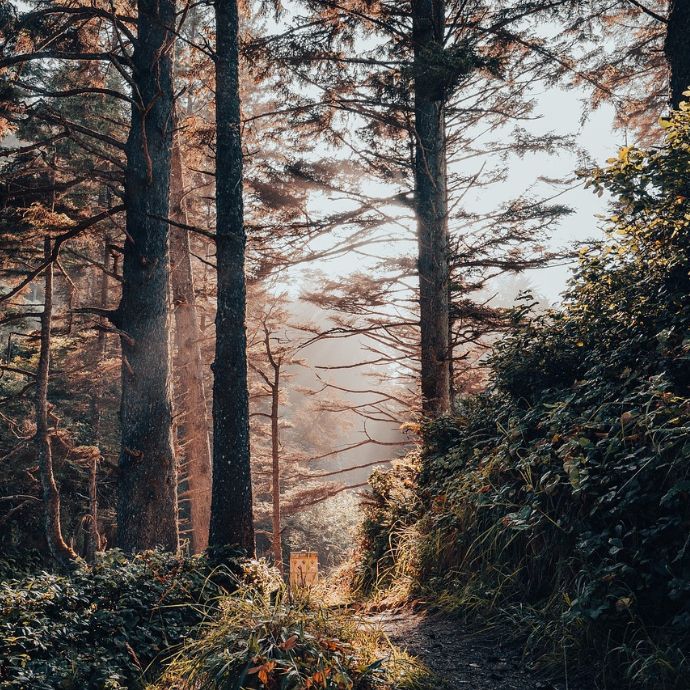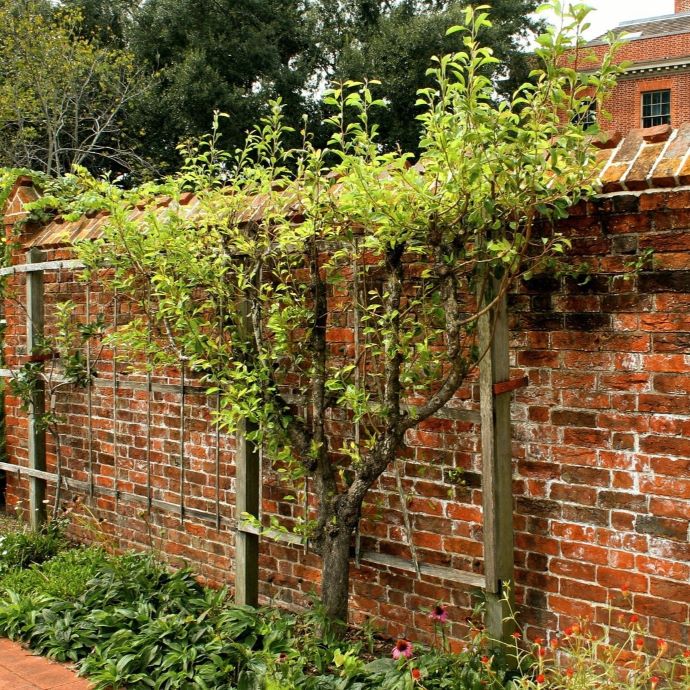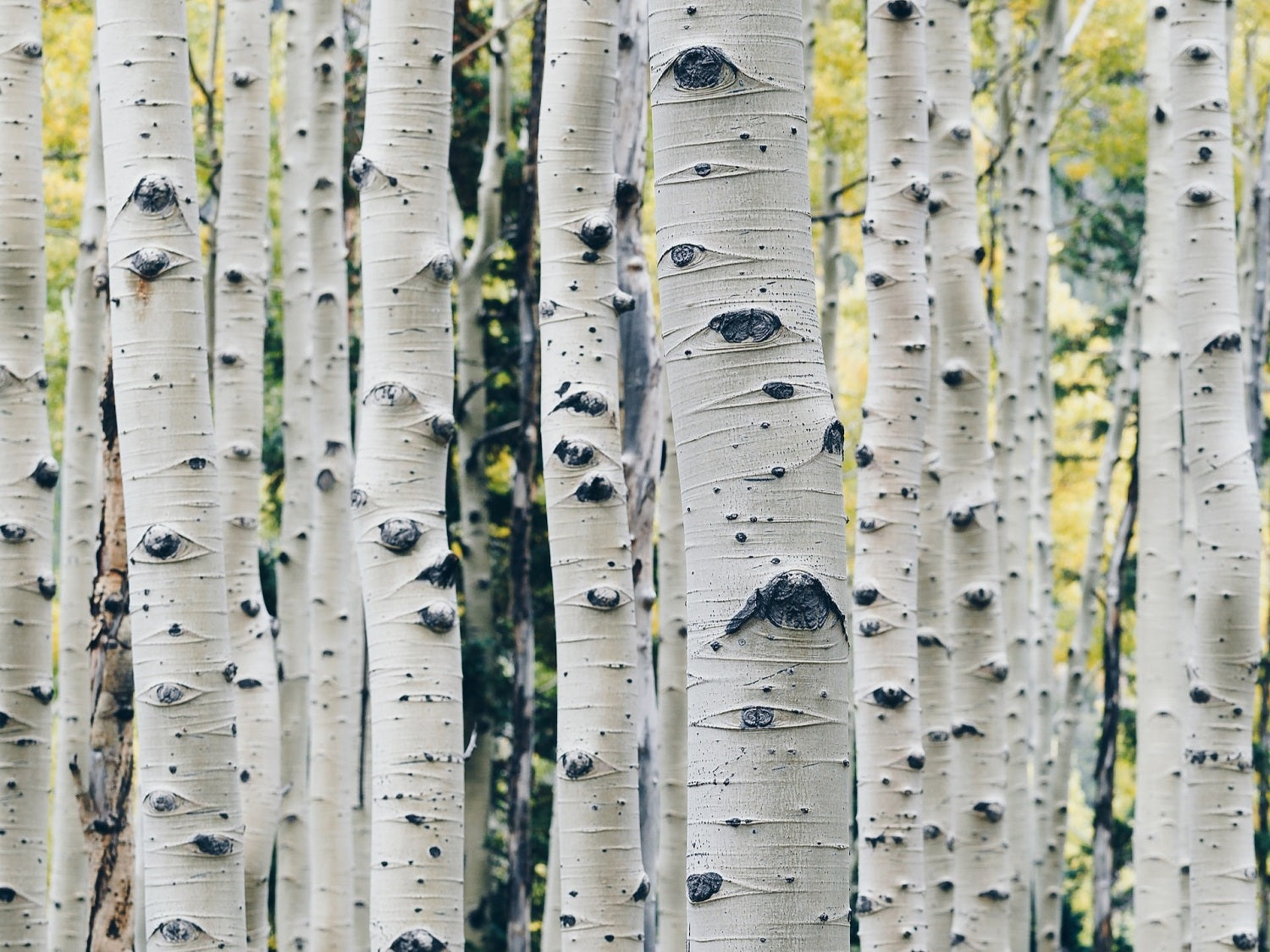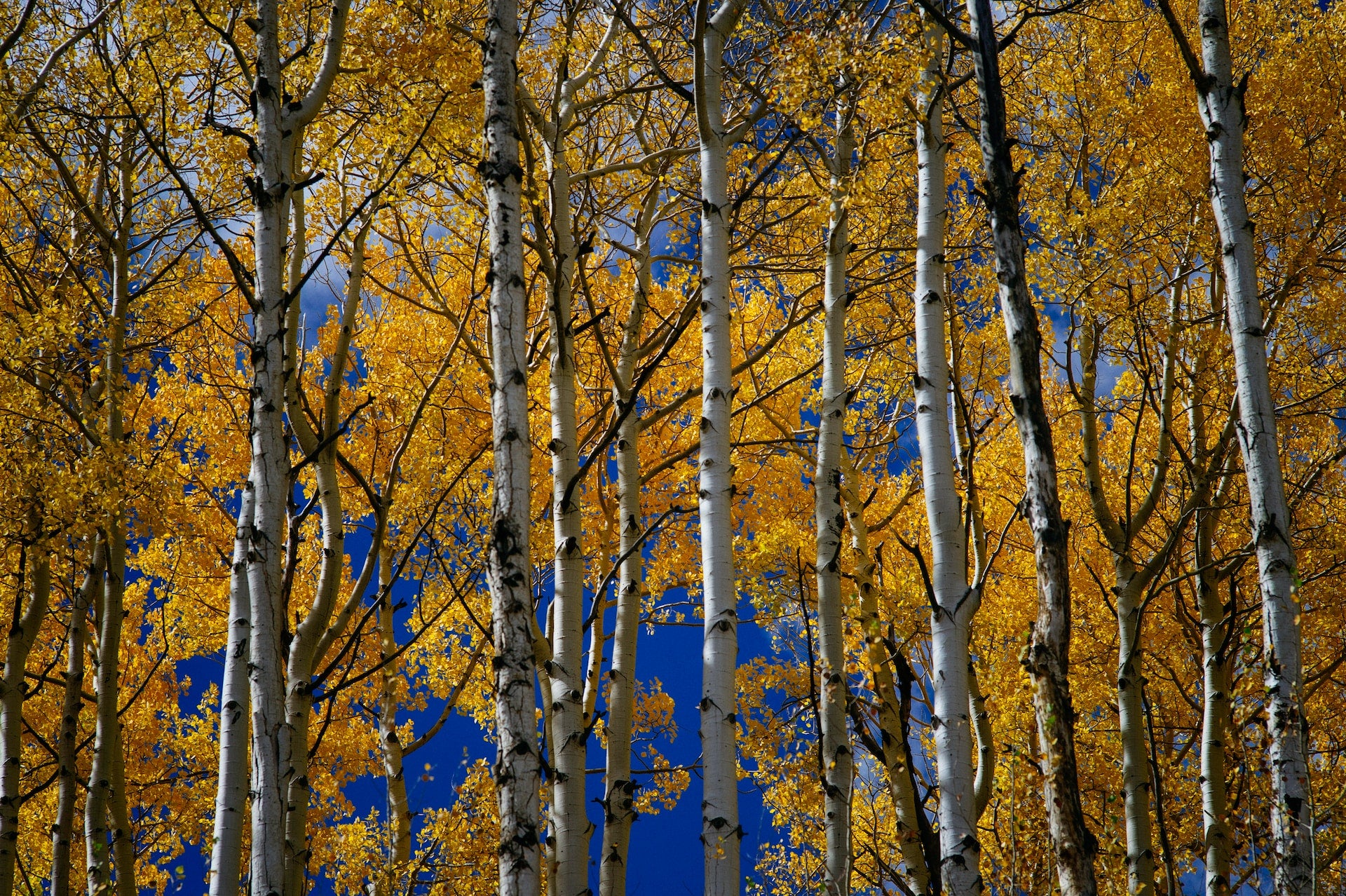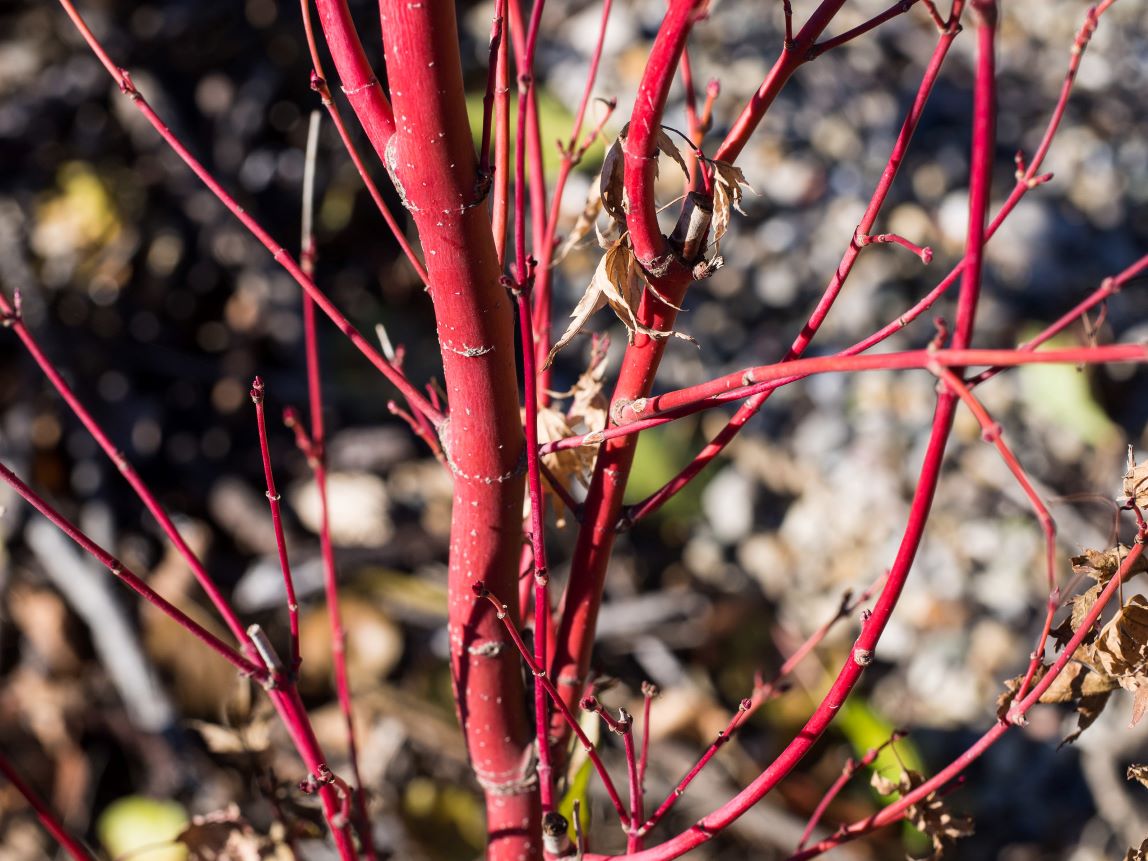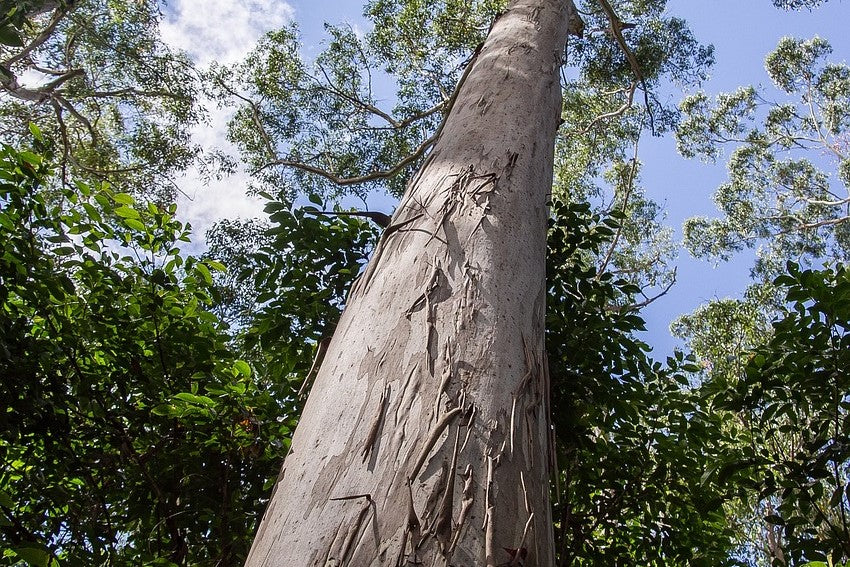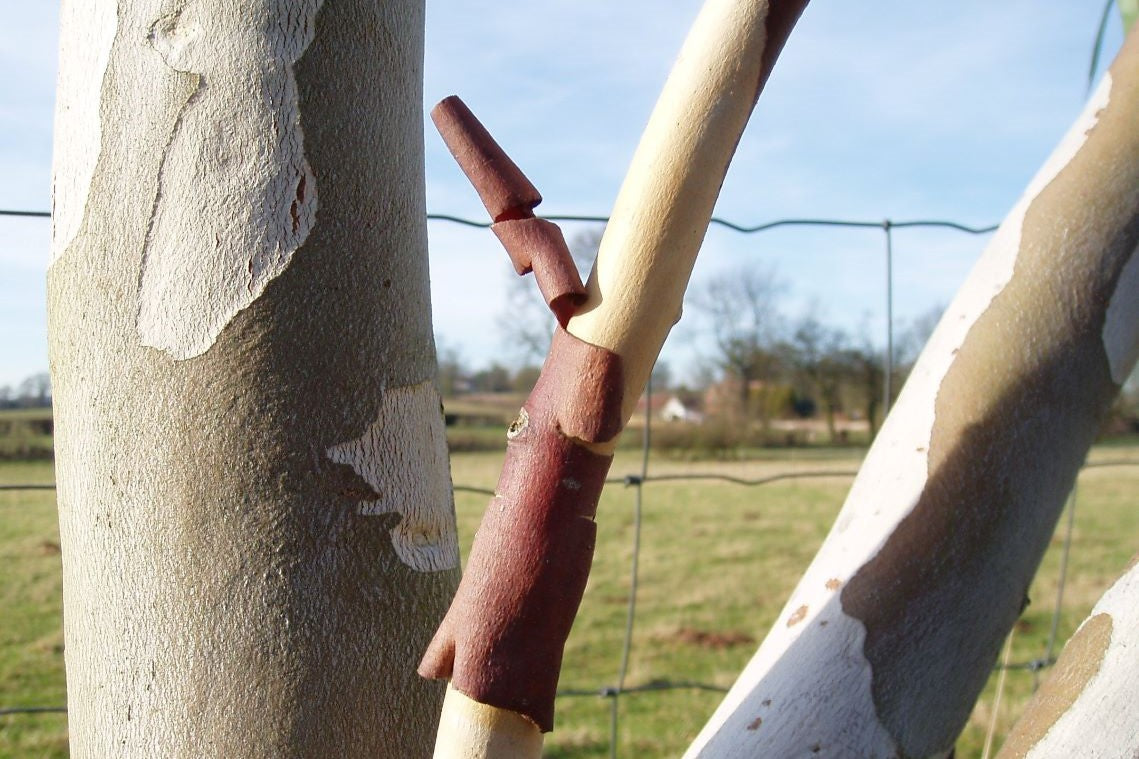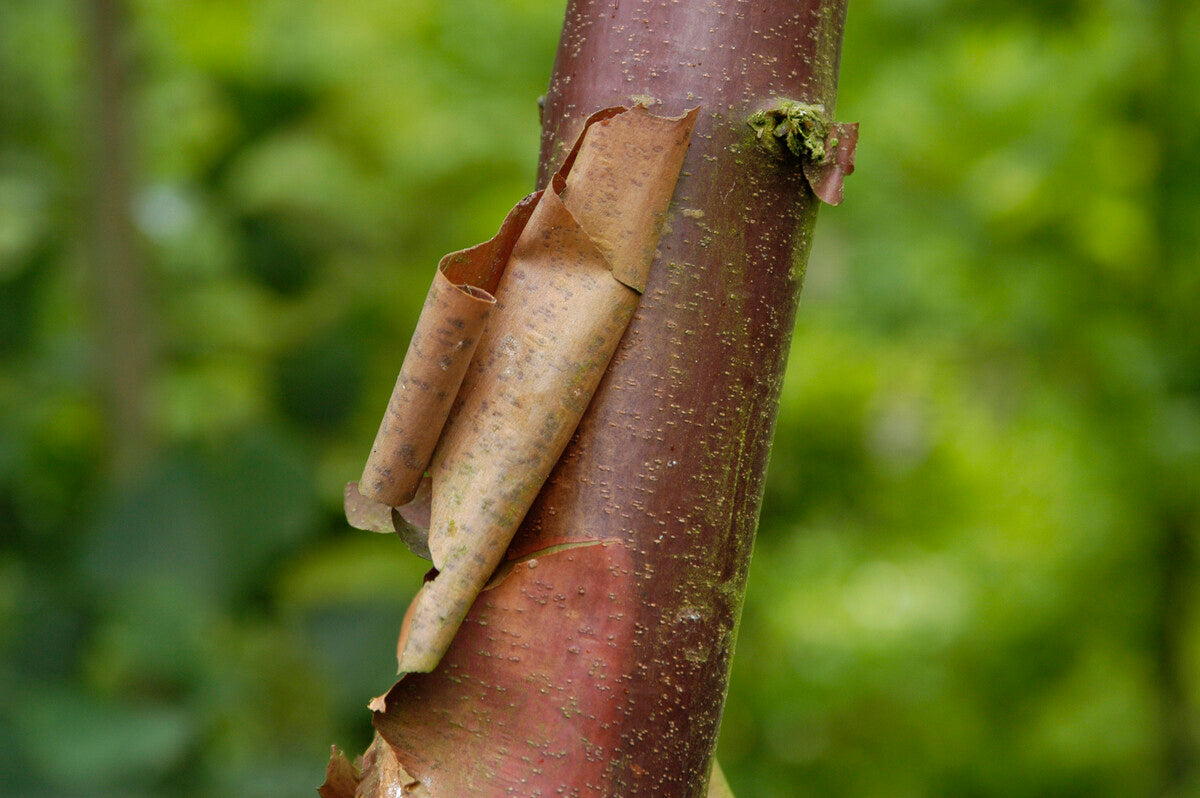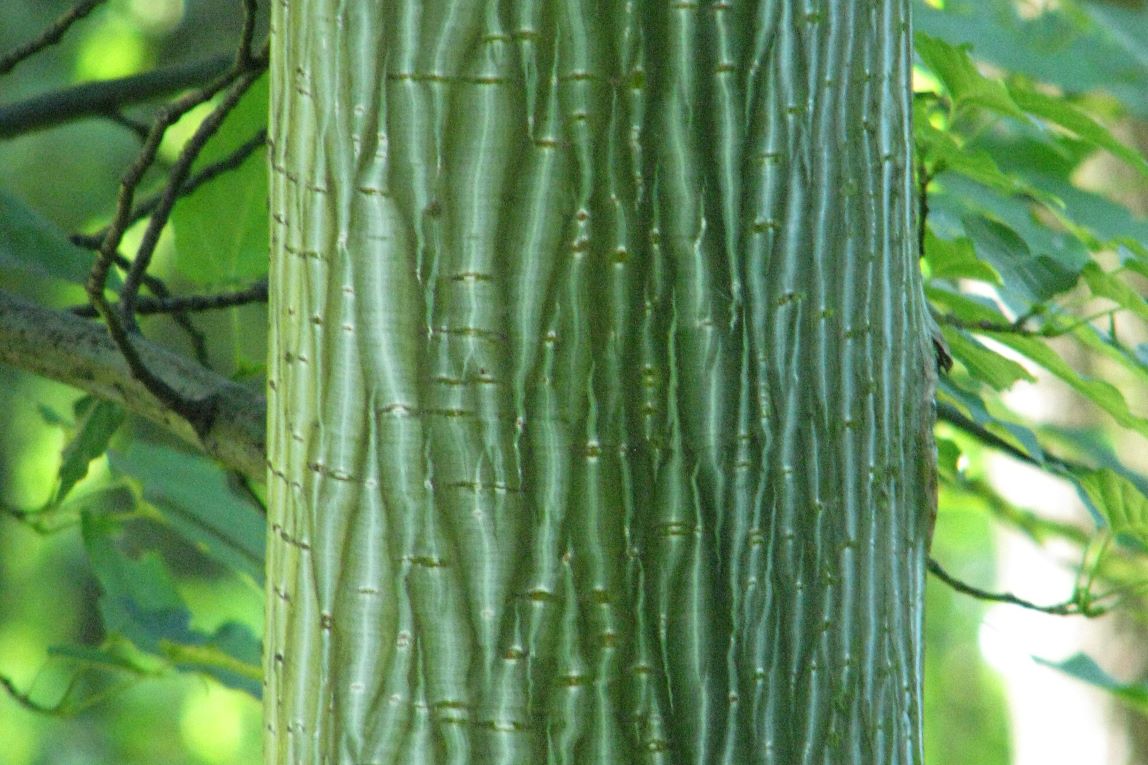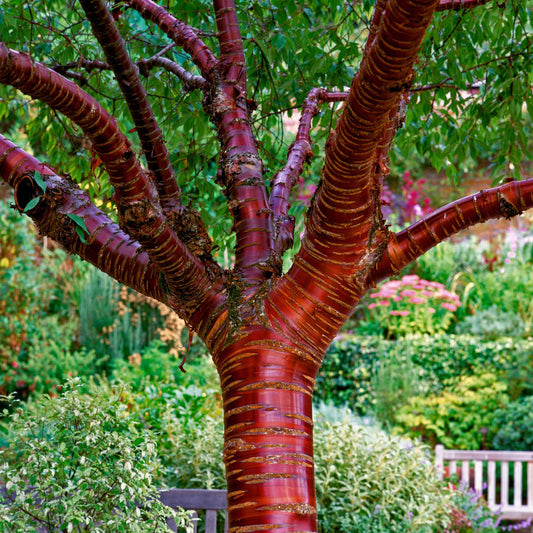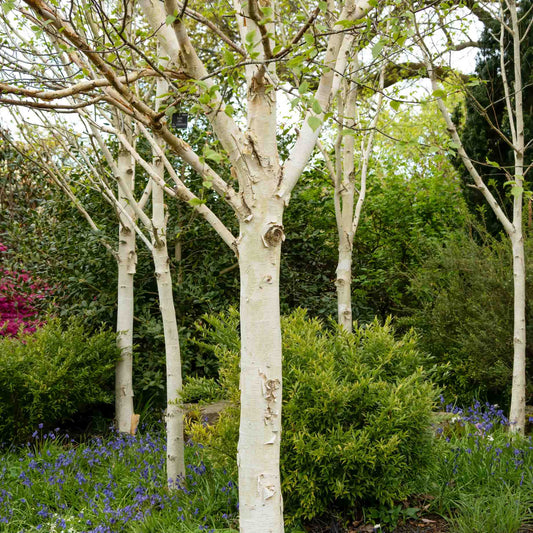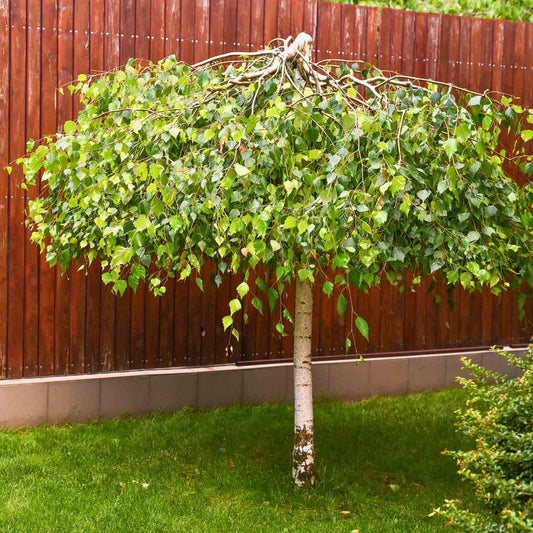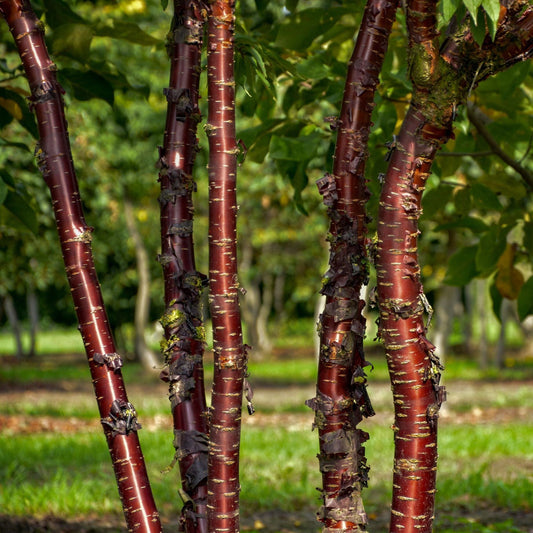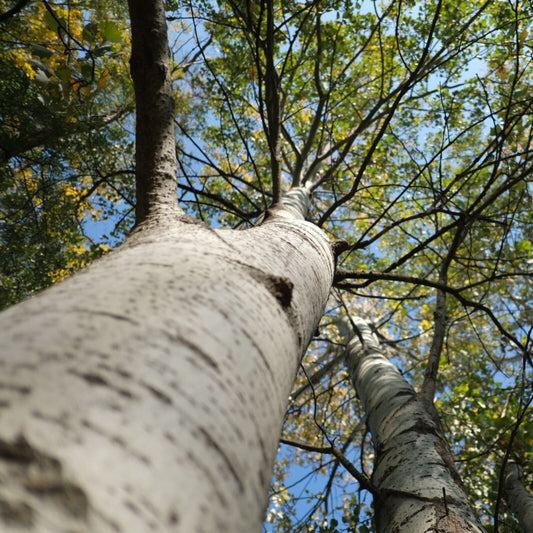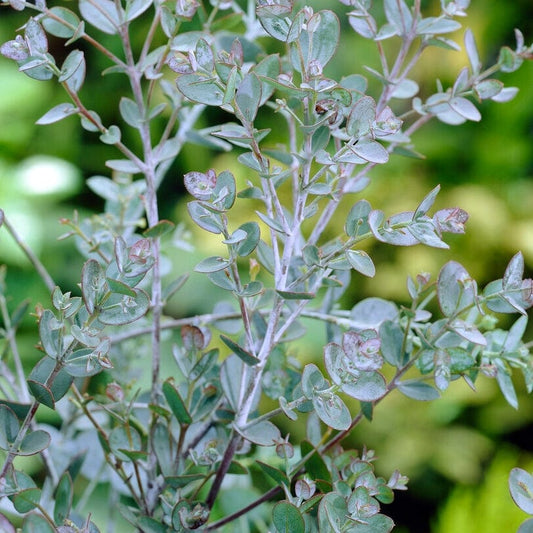The Top 10 Trees with Interesting Bark
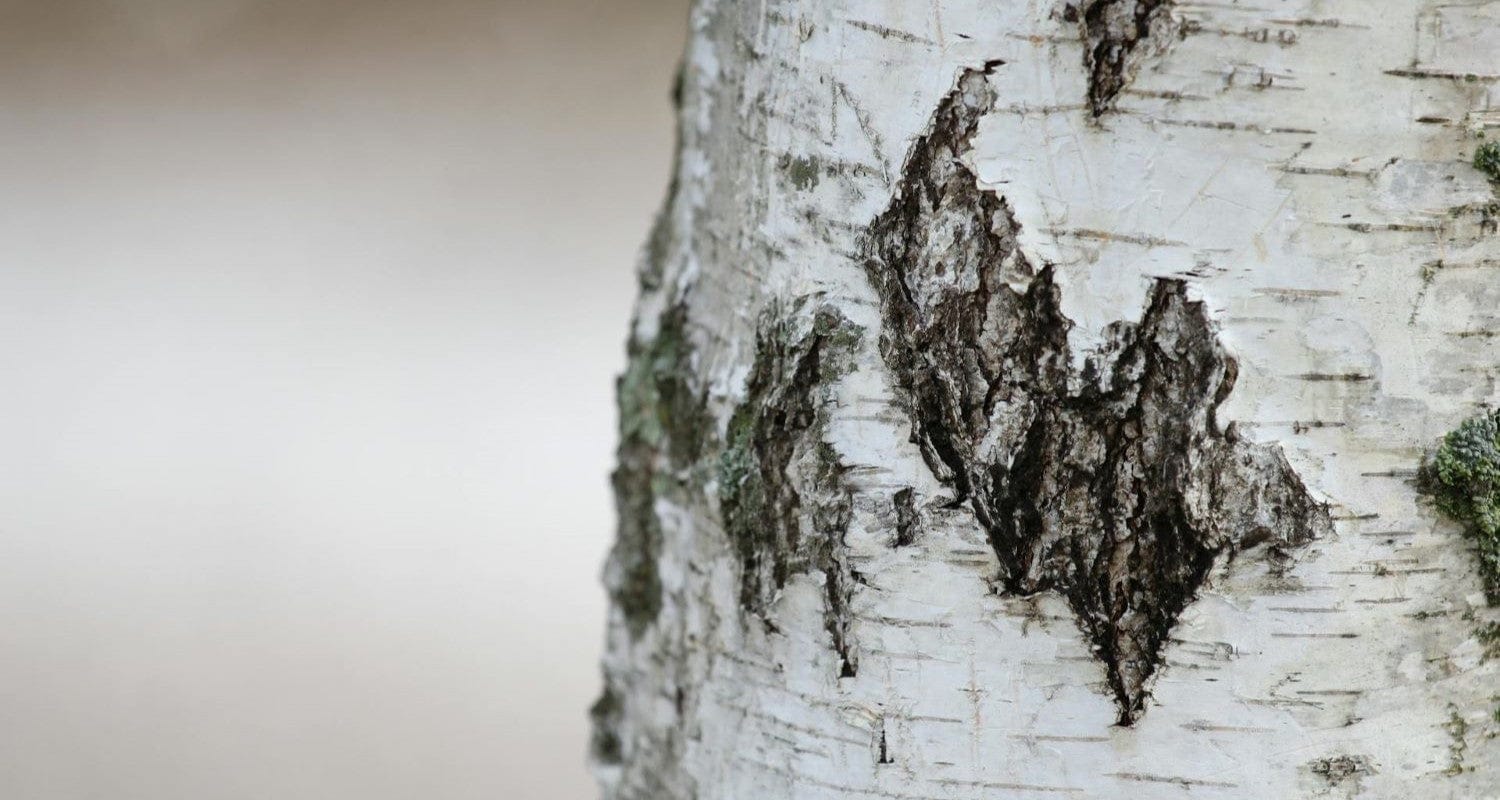
Flowers and berries are all very well, but they can be fair weather friends. When the leaves have fallen and the branches are bare, that’s when you really find out which trees have got your back. Or in this case, bark.
Look closely at this most underrated tree feature and you’ll find there’s much more to it than you think. Whether it's the moonlit iridescence of a silver birch, the shining reds and bronzes of the Tibetan cherry or the dynamic peeling textures of a Paperbark maple, these trees add another visual and sensory level to your planting, especially throughout the winter. When you choose a tree with beautifully coloured or textured bark, you’ll have a garden with true four season appeal. Which one will you choose?
Jump to:
- White bark
- Red bark
- Yellow bark
- Shining bark
- Changing bark
- Peeling bark
- Patterned bark
- Tree bark textures
- Making the most of your bark
- Where to plant
Which trees have white bark?
Some trees, such as the iconic silver birch, have evolved with white bark as a defence against sun damage (see below), so you tend to see white and cream colours on trees with tall trunks and airy crowns.
They’re wonderfully dramatic trees, shining in the morning sunlight and standing out at night, especially when they’re planted with contrasting trees such as evergreens or those with red-bronze bark.
When they mature, you’ll often see dark fissures developing, or peeling bark, which just adds to the drama. As well as silver birches, you’ll find white shimmering bark on weeping Japanese cherry (Prunus pendula) trees, aspens, paperbark, river and Himalayan birches.
Our recommendation:
Himalayan birch
For the whitest bark, we recommend the Himalayan birch. Its snowy white bark peels off annually, revealing a new layer that starts off yellow and ages to a wintery white. As the year goes on, you’ll see lime green leaves emerging in spring, with catkins to encourage pollinators to your garden.
The cone-like fruits send ‘helicopter’ seeds whirling to the ground in summer before golden yellow foliage warms up the autumn landscape. Himalayan birches make a great feature tree for a woodland garden, or plant them in a group like this hauntingly beautiful display at Anglesey Abbey.
Silver birch
This instantly recognisable tree is an iconic feature of woodlands throughout the UK, with its luminescent white-silver bark which fissures with age.
As a native species, it’s one of the best choices for wildlife, supporting over three hundred species of insects, innumerable fungi and birds including siskins, redpolls, greenfinches and woodpeckers.
The chartreuse green leaves form a light, open canopy which is ideal for underplanting with bluebells and other woodland plants.
Why are birch trees white?
If you’re wondering why some trees would evolve with white bark, there are several reasons.
Camouflage
Birch trees often occur naturally in environments which get a lot of snow, and their white trunks allow them to blend in so they don’t get damaged by woodland animals like deer while the trees are young. It also deters insects that damage bark, such as bark and borer beetles, as these are more attracted to dark-coloured bark.
Sun protection
Birch trees are often tall and open-crowned, so they produce a lot of white pigments including betulin which turn the bark white. These pigments protect against UV radiation and heat from sunlight, acting as a natural sunscreen and enabling the trees to grow taller without harm.
Pollination
It’s also thought that white bark can help trees to attract pollinators in darker woodland environments, by standing out against their surroundings.
Which trees have red bark?
Some trees have red, bronze or copper-coloured bark, which is caused by tannins in the wood. Almost all trees contain some level of tannins, which help to protect them from fungus and insect infestations as well as giving some protection against sun damage.
Trees with red bark have often originated in hot, humid countries or environments, where they evolved higher levels of tannin to cope with their conditions.
Fortunately for us in the not-exactly-hot-or-humid UK, these striking trees keep their colour, bringing a very welcome burst of bright red or metallic copper to our dull winter landscapes.
Amongst the reddest are the coral bark acer (or 'Sango-kaku') the red stemmed cornus (or dogwood) and two varieties of willow with orange-red stems, Salix alba vitellina ‘Britzensis’ and vitellina ‘Yelverton’.
There are many more choices of reddish-brown bark trees, including the Tibetan cherry and paperbark maple, both of which also have peeling bark (see below).
Our recommendation:
Coral bark acer
The coral bark acer tree brings all the explosive colour you expect with lush lime green, scarlet-tipped leaves, but then ups the ante with dazzling coral red bark.
This unique colouration develops in the autumn when it provides the perfect backdrop to autumn foliage that gradually turns from golden yellow to warm russet orange. It looks even better in the snow!
Which trees have yellow bark?
Yellow tree bark is more unusual, but one of our most beloved UK native trees, the willow, has several yellow-stemmed varieties. Some of the best include 'Golden Ness', 'Hutchinson’s Yellow' and the classic golden weeping willow.
With all of these willows, you’ll need to prune them hard in winter to produce the best yellow colour, which comes from the new growth.
Strictly speaking it’s another shrub, but an honourable mention has to go to the yellow-stemmed dogwood, Cornus stolonifera ‘Flaviramea’, whose upright lemon-yellow stems provide a real burst of winter sunshine!
Our grower recommends:
Golden weeping willow
This RHS-award-winning tree is an icon of the British riverbank, with its naturally graceful, domed shape and slender, golden branches that sweep the ground. In spring, you’ll see it covered in sunny yellow catkins against a backdrop of bright green foliage which turns - you guessed it - yellow in autumn.
Which trees have shining bark?
Trees with metallic or shining bark are always a talking point in a garden, pairing particularly well with reflective ponds and water features or in a sunny spot where the light can reflect off them.
Eucalyptus trees have a silver-green bark which enhances the natural grey-blue tint of their leaves; similarly Snake Bark maple (see below) has a green-tinged shimmer to its textured bark.
Our grower recommends:
Cider gum
Eucalyptus is a fast-growing evergreen that can be grown as a shrub, specimen tree or hedging. The main attraction is its colours - the fragrant, blue-green rounded foliage takes on silver tones as it matures, with small, spiky, delicate white flowers in summer. The silvery green bark is the perfect foil, and it even peels as it matures.
Snow gum
This slender, upright tree (also a eucalyptus) makes a great feature for a small to medium sized garden, where its patterned silver-green bark will create a real talking point. The aromatic grey-green leaves are a distinctive rounded shape and highly prized by florists. Bees are equally enthusiastic about the creamy white summer flowers.
Which trees have bark that changes with age?
Many trees will undergo changes to the colour and texture of their bark as they mature. You’ll notice this happening mainly on the trunk, which is the oldest part of the tree. The rainbow eucalyptus takes this to extremes.
Its bark that starts off with an orange tint, then as it matures and sheds, takes on streaks of green, red, orange, grey, and purple. However, since it’s most often found in rainforests, you may have to settle for something a little less dramatic.
Our grower recommends:
'Royal Frost' crimson birch
A birch tree with a difference... The burgundy-coloured leaves of 'Royal Frost' make a striking contrast against its creamy white peeling bark, but that’s not where the show ends. As the tree matures, the bark colour will change from white, through cinnamon to brown. This variety has particularly lovely autumn colour too, with leaves that turn to glowing shades of orange, red and golden yellow.
Which trees have peeling or exfoliating bark?
Tree bark peels when the tree trunk ages and the outer layers of bark need to expand to accommodate new layers. This can give the tree trunk a fantastic new texture, with curled strips of bark peeling vertically or horizontally outwards from the trunk like parchment pages.
Trees with peeling bark, such as the copper-coloured Tibetan cherry, are great for sensory gardens, or any space that needs extra texture. They also have some of the best scented bark.
Our grower recommends:
Paperbark maple
Paperbark maple is a slow-growing tree with ultra-tactile, cinnamon coloured peeling bark that you just have to reach out and touch. Each year a layer of old bark peels off like paper, revealing the new orange-red bark beneath.
It’s the only peeling species of acer, and for such a dramatic tree, it’s really easy to grow; it's rarely bothered by pests or diseases, low on pruning needs and happy in any soil - even clay. The leaves are an intense blue-green, turning fiery red and orange in autumn.
Tibetan cherry
With its bold colour and metallic shine, this tree really shines in the winter landscape, shedding layers of translucent amber bark as it grows, that glow in the sunlight.
Clusters of lacy white flowers appear in April and May, followed by ornamental cherries and slender sage-green leaves that turn a glowing golden yellow in autumn.
Tibetan cherry is surprisingly easy to grow - it’ll tolerate even chalky soil, needs only minimal pruning and sucks up pollution, making it ideal for streetside planting.
Which trees have patterned and textured bark?
Patterned bark is another happy effect of the expanding tree trunk. The new layers of the trunk push the older ones outwards, creating attractive cracks, stripes and patterns in the outer part of the trunk.
Snake Bark acer is a particularly striking example, taking its name from its green and silvery-white striated bark that looks like a snake print. Many trees also develop interesting textures as they mature, such as sweet chestnuts and oaks which form ridges and cracks, or sycamores and horse chestnuts, whose bark takes on the texture of plates or scales.
Our grower recommends:
Snake bark acer
Acer davidii, or snake bark maple, is an unusual acer variety with an eye-catching striated bark in a silvery-green colour that resembles a snake print. The green colour scheme continues with lime coloured flowers and forest green foliage, before the leaves put on a fabulous fiery orange display in autumn. Compact and easy to grow, this is an ideal specimen tree for a border or front garden.
What are the different tree bark textures?
Tree species have developed many different texture variations - these are the main ones to look out for.
Lenticels
Lenticels are the dark horizontal lines you see on tree trunks. They’re the equivalent of pores for the tree, transporting carbon dioxide and oxygen through the tree’s outer bark, and come in many different shapes, sizes and colours, so they’re more visible on some species than others.
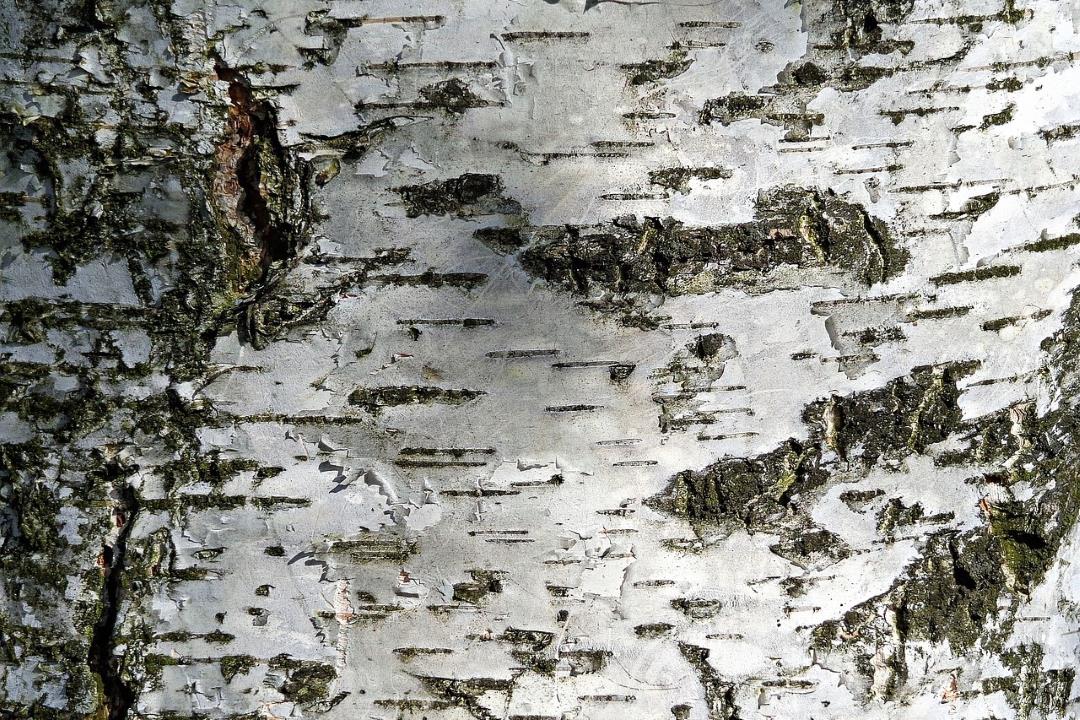
Ridges and furrows
Some trees have very rough, ridged looking bark, which if you examine it closely, contains gaps in the outer layer of bark, or the rhytidome, which are caused when the tree grows and the trunk expands. They can be horizontal or vertical.
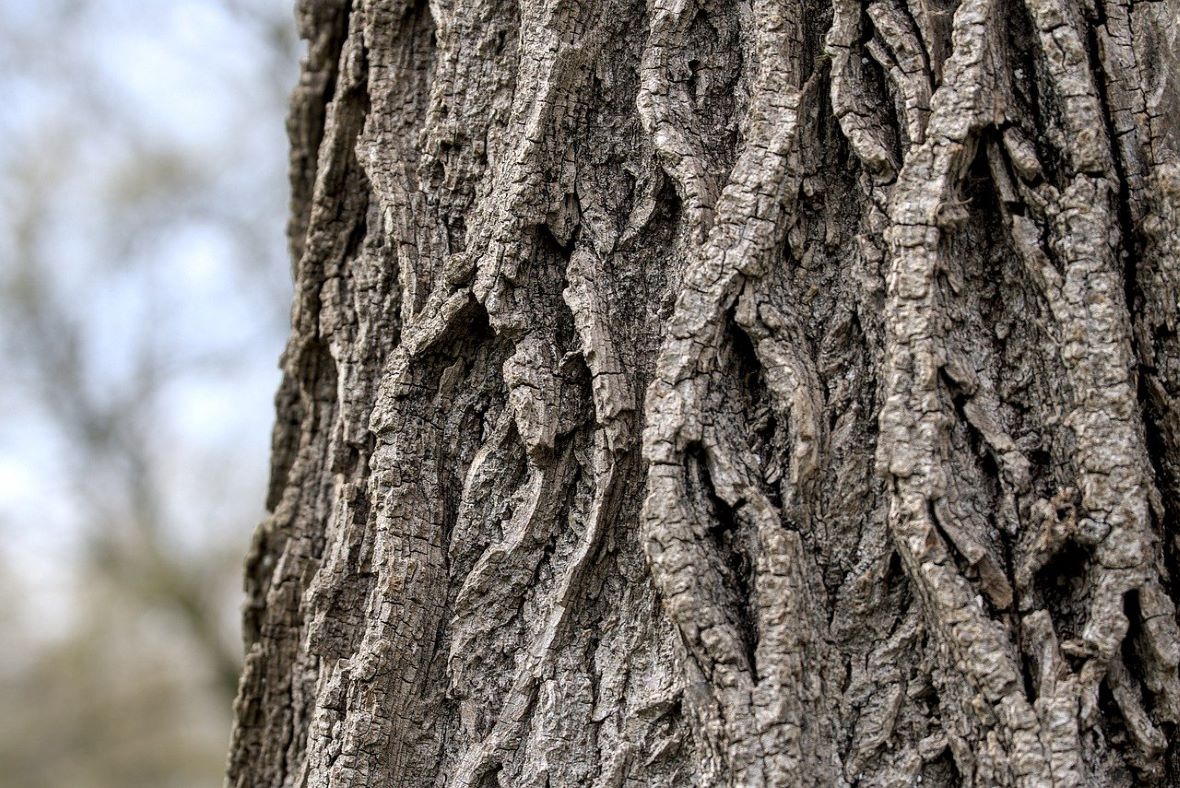
Plates and scales
Some tree bark has what looks like scales or plates - this is similar to the ridged bark in that it’s also a form of break in the rhytidome. You’ll often see a scaly effect on the bark of pine and spruce trees.
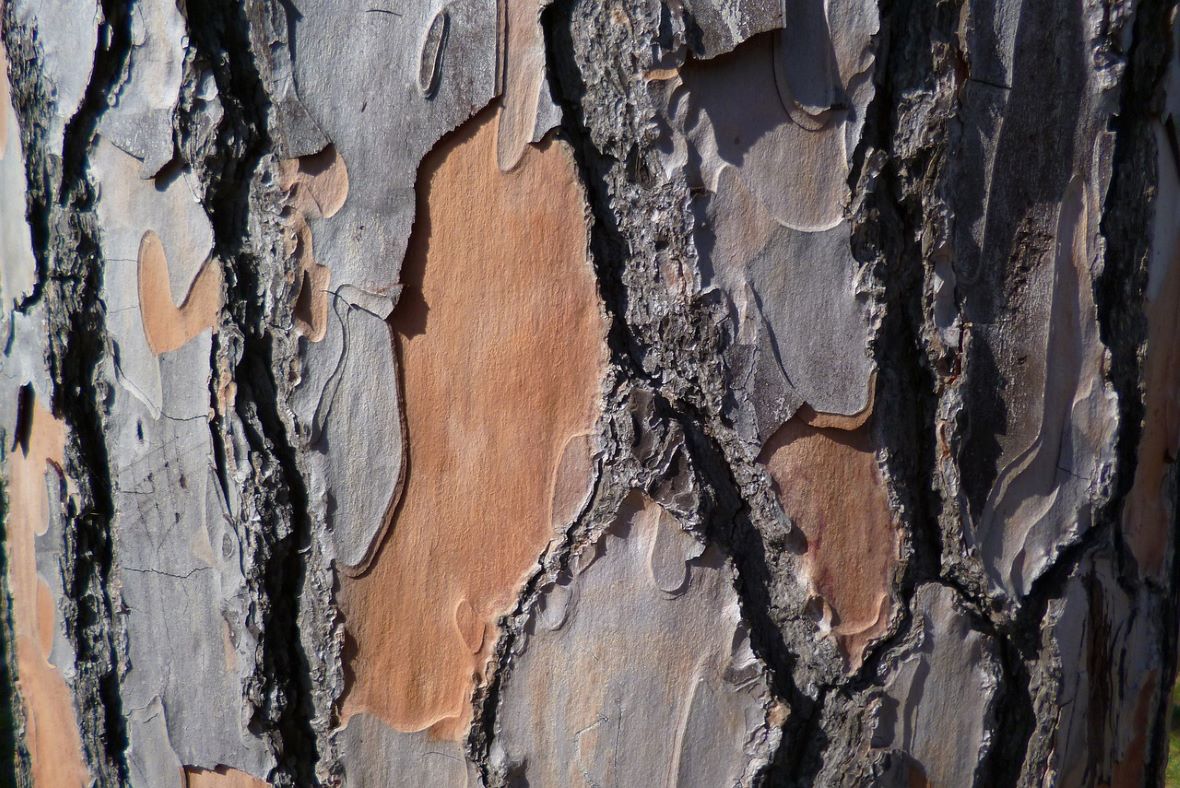
Making the most of your bark
Trees with unusual bark can be a real asset to your garden, so you’ll want to keep them looking their best. To really showcase the trunk, you can crown lift any tree by pruning out the lower-growing branches to make it more visible.
To make the most of a colourful tree bark, you can also wipe it down with warm water and a soft cloth to remove mud, dust or algae. Try to leave lichens and mosses alone though, as these are beneficial to the tree and its ecosystem.
Perhaps the most important thing to mention is that however tempting it may be, leave peeling bark alone! If the loose bark peelings come away without pulling, you won’t do any harm, but avoid pulling it as this can damage the new bark below the surface.
Where should you plant trees with interesting bark?
For maximum impact, plant your trees where their bark can be seen and appreciated. You could plant one on its own as a feature tree in a lawn or woodland border, or plant several of the same tree in a small group of two or three, for a natural woodland effect.
Striking contrasts can be really effective, too. Plant white and silver birches with red-barked trees such as Tibetan cherry or coral bark acer to show them both off equally.
They also go well against a backdrop of evergreens or conifers which will help to show off their bark, especially in winter. Don’t forget to draw attention to your trees by underplanting them with evergreen perennials or shrubs like hellebores and camellias for winter colour after the leaves have fallen.
Last updated: 08/01/2026


